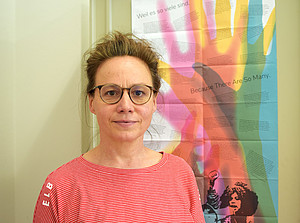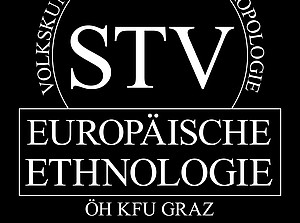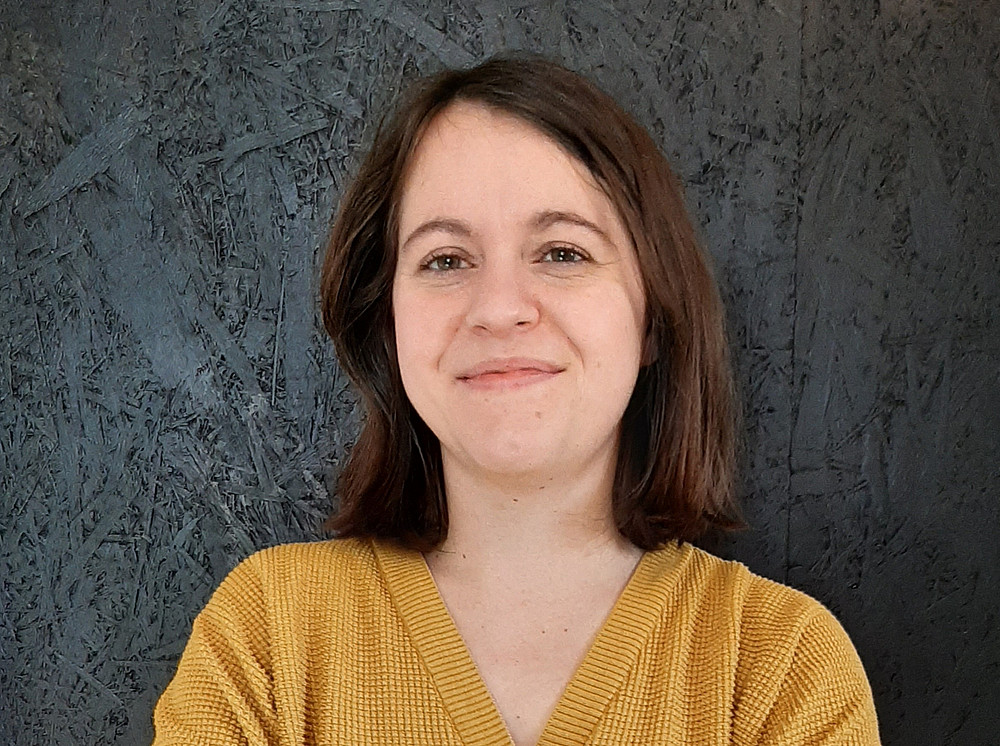"Questions for..."

Birgit Klancnik (Department Librarian)
What do you like best about your day-to-day work?
What I like best about my day-to-day work is that I get to meet a lot of new students and researchers and can then help them a little with using our library from the beginning of their studies - and usually until the end. That my work is generally very varied and never gets monotonous. And what I like most is when I find a long-lost book.
What exactly do you do?
I deal with all the tasks that arise in a library, such as ordering books for courses, setting up reference collections for our teaching staff, helping students to find books, general library supervision, checking subscriptions to journals and series, loans, cooperation with the main library, and lots of other little things...
Judith Laister (Lecturer, Researcher, Erasmus Coordinator)
What does a cultural anthropologist actually do?
As a cultural anthropologist, I deal with the relationship between humans (Greek anthropos) and culture. First and foremost, I ask the question: What is understood by "human" and what is understood by "culture" in the past and present, in different contexts of use and societies worldwide? This fundamental conceptual work goes hand in hand with the question of how people organize, shape and endow their lives and coexistence with meaning. The development and meaning of images, narratives, writings and modes of action are just as much of interest as the production and use of things, techniques, buildings and cities or the treatment of animals, plants and topographical features such as mountains or bodies of water. In short, cultural anthropology explores what makes us human and assumes responsibility for the peaceful coexistence of all inhabitants of the earth.

You also conduct research into art in public spaces. What do you find particularly interesting about this?
I also studied art history and visual arts education, worked in museums and schools. In my research and teaching I have always dealt with the productive interfaces between cultural anthropology, art and educational work. The so-called "art in public space" represents a field of research in which these areas overlap in a dense way. Overlapping with my research focus on urban anthropology, I am particularly interested in urban settings for "participatory art projects", in which artists make aesthetic statements in urban space with the participation of city residents and visitors. Examples that I myself have been involved in include the art projects "No monuments. On the history of work and immigration" (artist: Kristina Leko) or "Because there are so many" (artist: Elisabeth Schmirl). Here, very different ways of imagining and perceiving the city and society come together, the cultural analysis of which can contribute to an understanding of significant social issues of the present.
What is particularly important to you in teaching? What would you like to pass on to your students?
In addition to teaching the basics of cultural studies in a way that is as stimulating and realistic as possible, I would like to allow students to participate in finding and working on their own research topics in the sense of research-led teaching. It is important to me to sharpen students' research skills both in the lecture hall by reading and discussing academic texts and in the form of field exercises on site - especially in urban areas. In particular, I would like to convey to the students on their professional path that the differentiated collection, presentation and circulation of knowledge is not only an exciting and enjoyable task, but above all one with a high level of social responsibility.

Student representation
What exactly does it mean to be part of the StV+ European Ethnology/Cultural Anthropology?
- Advocating personally for the interests of students
- Helping to shape everyday student life and department life, e.g. in the Curricula Committee, at regular meetings
- Transparency of the Department`s decisions
- Understanding university structures
- Providing support with all questions about studying
What do you enjoy most about your work?
- Direct exchange with teaching staff and department employees
- Creating creative spaces
- Meeting other committed people
- Community
Where can I find out more about STV?
Tabea Söregi (Lecturer, Researcher, Praedoc)
Personally, what fascinates you most about your field?
When I think back to my studies in European ethnology, there are several concepts that fascinated me. As a child, I loved climbing into my bedclothes and watching the sunlight through the folds. Every time I moved, new folds appeared and the light came in from a different angle. I experienced our subject in a similar way. Every semester opened up new perspectives and experiences for me. I first felt a great enthusiasm for researching small aspects of social life that had links to much larger contexts.I particularly remember a course on the topic of "nosing around". A method in which the researchers virtually stumble into the field and follow their nose. We looked at different floor coverings in the city. Cobblestones may look aesthetically pleasing, but they are difficult to navigate with a wheelchair. Asphalt is more accessible, but is also an expression of the importance of cars in the city. In this way, floor coverings are experienced individually and at the same time are characterized by shared ideas of how a space should be designed. Certain movements in the space have priority and others do not, expressing certain power relations that are not fixed.

That brings me straight to the next thing that fascinated me Empirical cultural studies is very fine in its analysis. To quote Rolf Lindner and his text "On the nature of cultural analysis": "Everything and everything refers to something else, from which it feeds and to which it refers back." If we follow these references, a structure emerges with which we can trace cultural practices and find new perspectives.
For your dissertation, you are working on cine films. What exactly are you interested in?
Anyone who deals with cine films from a cultural perspective is less interested in the technical processes within a cine film camera or a film reel, but more in what they mean for the people filming and being filmed and how they were used. I work from a feminist, historical perspective that questions the narrowing of amateur film to family films (mostly filmed by men) that took place in the early 1920s. In doing so, I also look at the gender and family biographies that emerged and how these have changed over time with different cine film technologies.